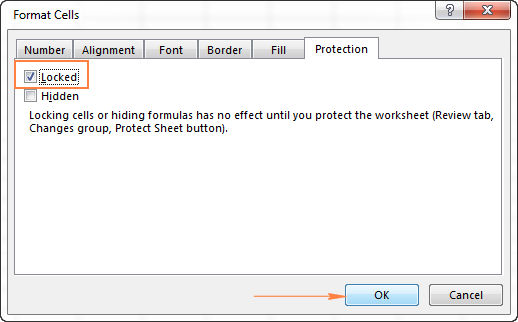Excitement About Excel Links Not Working
Table of ContentsThe 5-Minute Rule for Excel Links Not WorkingThe smart Trick of Excel Links Not Working That Nobody is DiscussingThe Basic Principles Of Excel Links Not Working Excel Links Not Working Things To Know Before You Get ThisThe Excel Links Not Working Diaries

Nevertheless, range computation functions like either can not handle entire column references or determine all the cells in the column. User-defined features do not automatically acknowledge the last-used row in the column and also, for that reason, regularly compute entire column referrals inefficiently. It is easy to program user-defined functions so that they identify the last-used row.

The Greatest Guide To Excel Links Not Working
Utilizing the formula for a vibrant variety is generally more effective to the formula because has the disadvantage of being a volatile function that will be calculated at every recalculation. Performance decreases due to the fact that the feature inside the vibrant array formula have to examine many rows. You can reduce this performance decline by storing the component of the formula in a separate cell or defined name, and after that describing the cell or name in the vibrant range: Counts!z1=COUNTA(Sheet1!$A:$A) Offset, Dynamic, Variety=OFFSET(Sheet1!$A$ 1,0,0, Counts!$Z$ 1,1) Index, Dynamic, Variety=Sheet1!$A$ 1: INDEX(Sheet1!$A:$A, Counts!$Z$ 1+ROW(Sheet1!$A$ 1) - 1,1) You can likewise make use of features such as to construct dynamic ranges, yet is unstable and always computes single-threaded.
Utilizing numerous dynamic ranges within a solitary column calls for special-purpose checking features. Utilizing numerous vibrant arrays can lower efficiency. In Office 365 version 1809 and also later on, Excel's VLOOKUP, HLOOKUP, as well as suit for specific suit on unsorted data is much faster than ever when searching for multiple columns (or rows with HLOOKUP) from the exact same table variety.
If you utilize the exact suit alternative, the calculation time for the function is symmetrical to the number of cells checked before a match is discovered. Lookup time using the approximate suit options of,, and on arranged information is rapid and also is not dramatically enhanced by the size of the range you are looking up.
The smart Trick of Excel Links Not Working That Nobody is Discussing
Guarantee that you recognize the match-type and range-lookup options in,, and. The adhering to code example reveals the phrase structure for the function. For more information, see the Suit method of the Worksheet, Function things. MATCH(lookup worth, lookup variety, matchtype) returns the largest match less than or equivalent to the lookup value when the lookup range is arranged rising (approximate match) (excel links not working).
The default option is approximate match arranged ascending. demands a specific match and presumes that the information is not arranged. returns the tiniest suit better than or equal to the lookup worth if the lookup selection is arranged descending (approximate match). The adhering to code example reveals the phrase my sources structure for the as well as functions.
VLOOKUP(lookup value, table array, col index num, range-lookup) HLOOKUP(lookup worth, table range, row index num, range-lookup) returns the largest suit much less than or equivalent to the lookup worth (approximate suit). Table variety should be arranged ascending.
A Biased View of Excel Links Not Working
If your information is sorted, however you want an exact suit, see Usage 2 lookups for arranged data with missing worths. Attempt utilizing the as well as functions instead of. Is a little faster (approximately 5 percent much faster), simpler, as well as utilizes less memory than a combination of as well as, or, the added adaptability that and offer commonly allows you to considerably conserve time.
The feature is fast and is a non-volatile feature, which accelerates recalculation. The feature is also quick; however, it is an unpredictable function, and also it often significantly increases the time required to refine the computation chain. It's easy to transform to and. The adhering to 2 declarations return the very same answer: VLOOKUP(A1, Information!$A$ 2:$F$ 1000,3, False) INDEX(Information!$A$ 2:$F$ 1000, MATCH(A1,$A$ 1:$A$ 1000,0),3) Due to the fact that precise suit lookups can be sluggish, think about the following options for improving efficiency: Utilize one worksheet.
When you can, the information first (is fast), and make use of approximate match. When you must utilize a specific suit lookup, restrict the article variety of cells to be scanned to a minimum. Use tables as well as organized references or dynamic range names rather than referring to a multitude of rows or columns.
Some Known Factual Statements About Excel Links Not Working
2 approximate suits are significantly faster than one precise suit for a lookup over even more than a couple of rows. (The breakeven go to website factor is concerning 10-20 rows.) If you can sort your data yet still can not make use of approximate match due to the fact that you can not be certain that the value you are looking up exists in the lookup variety, you can use this formula: IF(VLOOKUP(lookup_val, lookup_array,1, Real)=lookup_val, _ VLOOKUP(lookup_val, lookup_array, column, True), "notexist") The very first part of the formula functions by doing an approximate lookup on the lookup column itself.
VLOOKUP(lookup_val, lookup_array, column, Real) If the response from the lookup column did not match the lookup value, you have an absent worth, as well as the formula returns "notexist". Be conscious that if you seek out a value smaller sized than the smallest value in the listing, you obtain an error. You can handle this error by utilizing, or by adding a little examination worth to the list.
Beginning with Excel 2007, you can utilize the feature, which is both basic as well as rapid. IF IFERROR(VLOOKUP(lookupval, table, 2 FALSE),0) In earlier variations, a basic yet slow means is to make use of a feature that contains 2 lookups. IF(ISNA(VLOOKUP(lookupval, table,2, FALSE)),0, _ VLOOKUP(lookupval, table,2, FALSE)) You can stay clear of the double specific lookup if you make use of precise when, save the cause a cell, and also after that check the result before doing an.